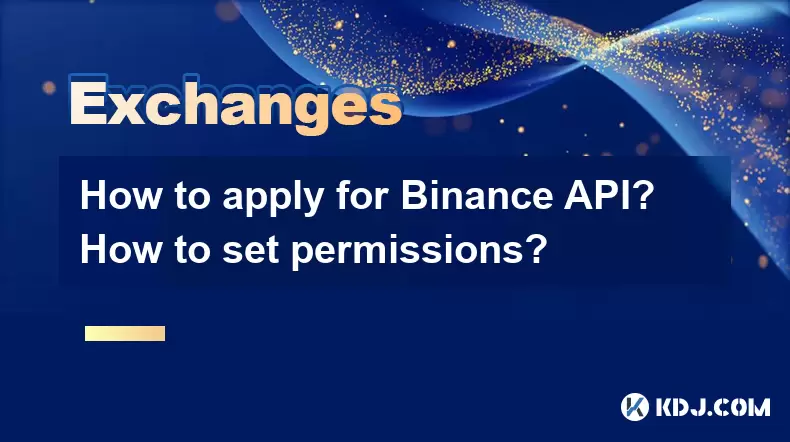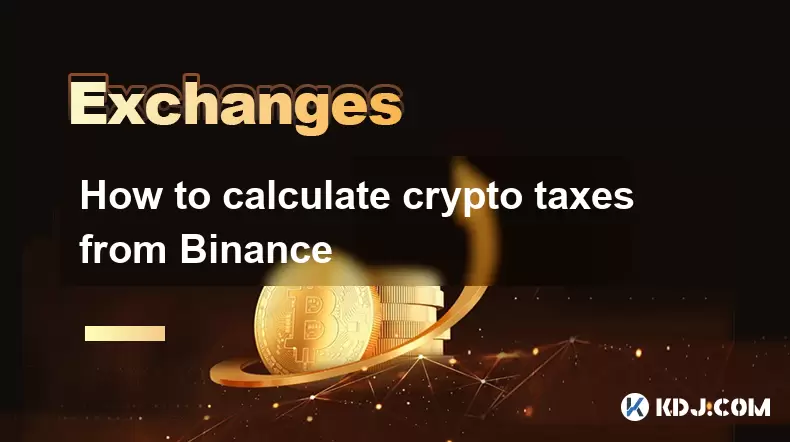-
 Bitcoin
Bitcoin $117500
2.15% -
 Ethereum
Ethereum $3911
6.19% -
 XRP
XRP $3.316
10.79% -
 Tether USDt
Tether USDt $1.000
0.01% -
 BNB
BNB $787.2
2.24% -
 Solana
Solana $175.2
4.15% -
 USDC
USDC $0.9999
0.00% -
 Dogecoin
Dogecoin $0.2225
8.40% -
 TRON
TRON $0.3383
0.28% -
 Cardano
Cardano $0.7868
6.02% -
 Stellar
Stellar $0.4382
9.34% -
 Hyperliquid
Hyperliquid $40.92
7.56% -
 Sui
Sui $3.764
7.63% -
 Chainlink
Chainlink $18.48
10.66% -
 Bitcoin Cash
Bitcoin Cash $582.1
1.88% -
 Hedera
Hedera $0.2601
6.30% -
 Avalanche
Avalanche $23.33
4.94% -
 Ethena USDe
Ethena USDe $1.001
0.02% -
 Litecoin
Litecoin $122.3
2.04% -
 UNUS SED LEO
UNUS SED LEO $8.969
-0.27% -
 Toncoin
Toncoin $3.339
0.86% -
 Shiba Inu
Shiba Inu $0.00001287
4.30% -
 Uniswap
Uniswap $10.43
7.38% -
 Polkadot
Polkadot $3.861
5.08% -
 Dai
Dai $1.000
0.02% -
 Bitget Token
Bitget Token $4.513
3.41% -
 Monero
Monero $267.7
-6.18% -
 Cronos
Cronos $0.1499
4.14% -
 Pepe
Pepe $0.00001110
5.15% -
 Aave
Aave $284.9
8.28%
How to apply for Binance API? How to set permissions?
Applying for a Binance API and setting permissions enhances trading by enabling automation and access to advanced features; follow steps for secure setup and use.
May 18, 2025 at 01:49 am

Applying for a Binance API and setting the correct permissions can significantly enhance your trading experience by allowing you to automate processes and access advanced trading features. In this article, we will guide you through the step-by-step process of applying for a Binance API and configuring the permissions to suit your needs.
What is a Binance API?
A Binance API, or Application Programming Interface, is a set of protocols and tools that allow you to interact with the Binance exchange programmatically. This means you can automate trading, retrieve real-time market data, and manage your account without manually navigating the Binance website or app. Binance offers two types of APIs: the RESTful API and the WebSocket API, each serving different purposes but both essential for advanced trading strategies.
How to Apply for a Binance API
To apply for a Binance API, you need to follow a series of steps that will lead you to generate your unique API keys. Here's how you can do it:
- Log into your Binance account: Ensure you are logged into your Binance account on the website. Navigate to the top right corner and click on your profile icon, then select 'API Management' from the dropdown menu.
- Create a new API key: On the API Management page, click on the 'Create API' button. You will be prompted to enter a label for your API key, which helps you identify it later. Choose a meaningful label and click 'Create'.
- Enable Two-Factor Authentication (2FA): Before you can generate an API key, Binance requires you to have 2FA enabled on your account. If you haven't already, set up 2FA using an authenticator app like Google Authenticator or Authy.
- Verify your identity: You will need to enter the 2FA code to proceed. After entering the code, you will receive an email from Binance with a verification link. Click on the link to confirm your API key creation.
- Download your API keys: Once your API key is created, you will see your API Key and Secret Key. It's crucial to download and securely store these keys, as the Secret Key will only be displayed once. Click on the 'Download' button to save the keys in a secure location.
How to Set Permissions for Your Binance API
Setting the correct permissions for your Binance API is crucial for security and functionality. Here's how you can configure the permissions:
- Navigate to API Management: Go back to the API Management page where you created your API key.
- Select your API key: Find the API key you just created and click on the 'Edit' button next to it.
- Configure permissions: You will see a list of permissions that you can enable or disable. These include:
- Enable Reading: Allows the API to read your account information, such as balance and order history.
- Enable Trading: Allows the API to place orders and manage your trades.
- Enable Withdrawal: Allows the API to withdraw funds from your account. This permission should be used with extreme caution.
- Enable Futures: Allows the API to interact with Binance Futures, if you have a futures account.
- Save your changes: After selecting the desired permissions, click on the 'Save' button to apply the changes. You may need to enter your 2FA code again to confirm the changes.
Security Considerations for Your Binance API
Securing your Binance API is paramount to protect your funds and personal information. Here are some best practices to follow:
- Use strong passwords and 2FA: Ensure your Binance account is protected with a strong password and 2FA is enabled.
- Store API keys securely: Never share your API keys with anyone, and store them in a secure location, such as an encrypted file or a hardware wallet.
- Limit permissions: Only enable the permissions you need for your specific use case. For example, if you're only using the API for reading data, do not enable trading or withdrawal permissions.
- Monitor your API activity: Regularly check the API Management page to monitor the activity of your API keys and revoke any keys that you no longer use.
Using Your Binance API
Once you have your API keys and have set the appropriate permissions, you can start using your Binance API. Here are some common use cases:
- Automated trading: Use the API to automate your trading strategies, such as placing orders based on specific market conditions.
- Data analysis: Retrieve real-time market data and historical data to perform analysis and make informed trading decisions.
- Portfolio management: Use the API to manage your portfolio, including tracking your balances and order history.
Troubleshooting Common Issues
If you encounter issues while applying for or using your Binance API, here are some common problems and solutions:
- API key not working: Ensure you have entered the correct API Key and Secret Key. If you have lost your Secret Key, you will need to create a new API key.
- Permission errors: Double-check the permissions you have set for your API key. If you need to change permissions, go back to the API Management page and edit your key.
- 2FA issues: If you're having trouble with 2FA, ensure your authenticator app is up to date and that you're entering the correct code. If you lose access to your 2FA, you will need to contact Binance support to regain access to your account.
Frequently Asked Questions
Q: Can I have multiple API keys for my Binance account?
A: Yes, you can create multiple API keys for your Binance account. This is useful if you want to use different keys for different purposes or if you're working with multiple developers or applications.
Q: How often should I rotate my API keys?
A: It's a good practice to rotate your API keys periodically, such as every few months, to enhance security. You can do this by creating new keys and revoking the old ones.
Q: What should I do if I suspect my API key has been compromised?
A: If you suspect your API key has been compromised, immediately go to the API Management page and revoke the key. Then, create a new API key with the necessary permissions and update your applications to use the new key.
Q: Can I use the same API key for both spot and futures trading?
A: Yes, you can use the same API key for both spot and futures trading, provided you have enabled the 'Enable Futures' permission for that key. However, for security reasons, it's often recommended to use separate keys for different types of trading.
Disclaimer:info@kdj.com
The information provided is not trading advice. kdj.com does not assume any responsibility for any investments made based on the information provided in this article. Cryptocurrencies are highly volatile and it is highly recommended that you invest with caution after thorough research!
If you believe that the content used on this website infringes your copyright, please contact us immediately (info@kdj.com) and we will delete it promptly.
- XRP ETF, Bitcoin ETF, and Japan: A New Era for Crypto Investing?
- 2025-08-08 14:30:12
- Crypto, Congress, and Bills: Navigating the Regulatory Landscape in 2025
- 2025-08-08 14:30:12
- Union Jack Oil, Unused Gas, and Bitcoin: A New York Minute on UK's Crypto-Energy Play
- 2025-08-08 14:50:12
- Bitcoin Price: Bullish Flag Points to $123K Breakout?
- 2025-08-08 14:50:12
- Crypto Group's WNBA Dildo Toss: Meme Coin Mania or Just Plain Dumb?
- 2025-08-08 14:55:13
- Stablecoins, Hong Kong, and On-Chain Finance: Navigating the Regulatory Maze
- 2025-08-08 12:30:12
Related knowledge

How to use margin trading on Poloniex
Aug 08,2025 at 09:50am
Understanding Margin Trading on Poloniex

How to use advanced trading on Gemini
Aug 08,2025 at 04:07am
Understanding Advanced Trading on GeminiAdvanced trading on Gemini refers to a suite of tools and order types designed for experienced traders who wan...

How to deposit USD on Bitstamp
Aug 07,2025 at 05:18pm
Understanding Bitstamp and USD DepositsBitstamp is one of the longest-standing cryptocurrency exchanges in the industry, offering users the ability to...

How to use the Kraken Pro interface
Aug 08,2025 at 09:57am
Understanding the Kraken Pro Interface LayoutThe Kraken Pro interface is designed for both novice and experienced traders seeking a streamlined experi...

How to find my transaction ID on Gemini
Aug 08,2025 at 12:50am
Understanding the Transaction ID in Cryptocurrency ExchangesA transaction ID (TXID) is a unique alphanumeric string that identifies a specific transfe...

How to calculate crypto taxes from Binance
Aug 08,2025 at 07:56am
Understanding Cryptocurrency Taxation on BinanceCalculating crypto taxes from Binance requires a clear understanding of how tax authorities classify d...

How to use margin trading on Poloniex
Aug 08,2025 at 09:50am
Understanding Margin Trading on Poloniex

How to use advanced trading on Gemini
Aug 08,2025 at 04:07am
Understanding Advanced Trading on GeminiAdvanced trading on Gemini refers to a suite of tools and order types designed for experienced traders who wan...

How to deposit USD on Bitstamp
Aug 07,2025 at 05:18pm
Understanding Bitstamp and USD DepositsBitstamp is one of the longest-standing cryptocurrency exchanges in the industry, offering users the ability to...

How to use the Kraken Pro interface
Aug 08,2025 at 09:57am
Understanding the Kraken Pro Interface LayoutThe Kraken Pro interface is designed for both novice and experienced traders seeking a streamlined experi...

How to find my transaction ID on Gemini
Aug 08,2025 at 12:50am
Understanding the Transaction ID in Cryptocurrency ExchangesA transaction ID (TXID) is a unique alphanumeric string that identifies a specific transfe...

How to calculate crypto taxes from Binance
Aug 08,2025 at 07:56am
Understanding Cryptocurrency Taxation on BinanceCalculating crypto taxes from Binance requires a clear understanding of how tax authorities classify d...
See all articles

























































































